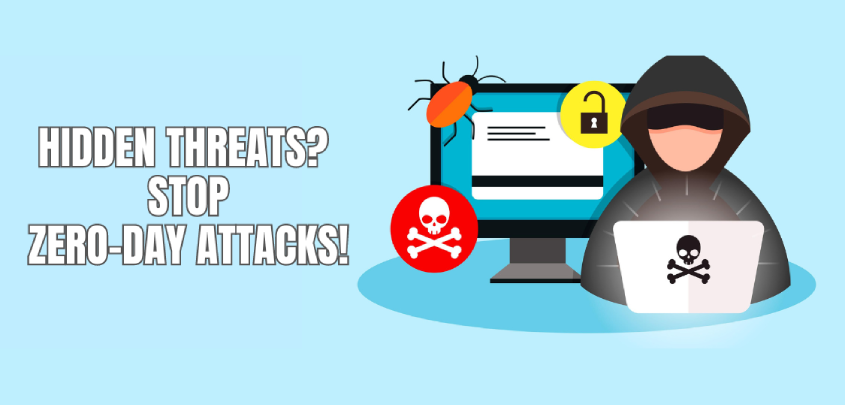
05, Apr, 2024
Zero-Day Attacks: Understanding the Threat in Today’s Digital World
The digital landscape offers incredible convenience, but it also comes with inherent risks. One of the most concerning threats in this ever-evolving world is the zero-day attack
What are Zero-Day Attacks?
Imagine a brand new security system installed in your home. It seems foolproof, right? But what if there’s a hidden backdoor no one knows about? A zero-day attack is like that – it exploits a security weakness (the backdoor) in software, websites, or even your phone that no one, not even the creators, were aware of.
Why “Zero-Day” Matters:
These weaknesses are like newly discovered cracks in a wall. Software companies (like the safe maker) usually have time to patch these cracks (update the software) before anyone can exploit them. But with zero-day attacks, it’s different. Hackers discover the weakness first and create custom tools (like a special key) to exploit it before the company has a chance to fix it (patch the wall). This is why they’re called “zero-day” – the company has zero days to react.
Why are Zero-Day Attacks Scary?
- Surprise Attack: Regular security software is like a guard who only knows how to stop common burglars. They can’t stop someone with a special key (zero-day exploit) because they don’t know it exists.
- Fast Action: Hackers can launch attacks immediately, leaving users with little protection.
- Widespread Impact: These attacks can target any software, like the operating system on millions of phones, potentially affecting a huge number of people.
Examples of Zero-Day Attacks:
- Sneaking into the Bank: A hacker discovers a zero-day flaw in a bank’s mobile app. This flaw acts like a secret way to bypass the app’s security and access customer accounts. The hacker uses this to steal money before the bank can fix the flaw (patch the secret passage).
- Fake Delivery Notice: You receive an email that looks like it’s from a delivery company (like DHL or FedEx). The email contains a link that you’re supposed to click to “track your package.” However, this link is a zero-day attack! Clicking it takes you to a fake website designed to steal your credit card information when you try to “pay processing fees.”
- WannaCry Ransomware Attack (2017): This attack used a zero-day exploit to lock people’s computer files and demanded money to unlock them. It was like someone putting a digital lock on your files and asking for a ransom to remove it! This attack caused big problems for hospitals and businesses around the world.
By understanding zero-day attacks, you can be more vigilant online. Here’s how:
- Don’t Click on Suspicious Links: If an email or message arrives with a link you weren’t expecting, don’t click it! Hover your mouse over the link to see the real website address before you click.
- Software Updates are Your Best Friend: Always install updates for your computer, phone, and apps whenever they become available. These updates often contain fixes for security vulnerabilities.
- Use Security Software: Security software like antivirus and anti-malware can help identify suspicious activity, even if it can’t stop every zero-day attack.
Why is this information useful?
- Awareness is Power: Knowing about zero-day attacks helps you understand why software updates are so important. Those updates are like patching the secret passage to keep your phone safe.
- Stay Ahead of the Game: By being informed, you can be more cautious online and avoid falling victim to tricks hackers might use to exploit these vulnerabilities.
Remember, staying informed and taking precautions can significantly reduce your risk of falling victim to these hidden online threats.
